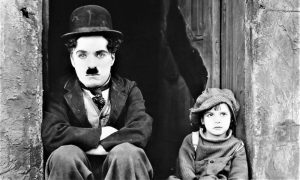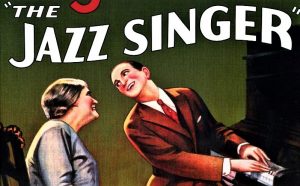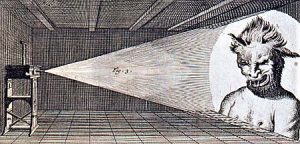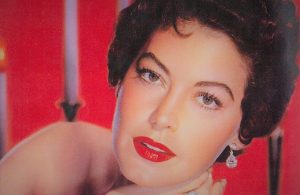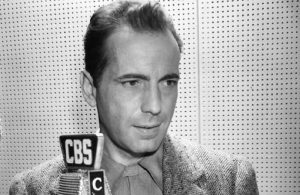Silent film
Cinema is a technique that projects a series of frames quickly and successively in order to create an impression of motion. It is a spectacle capable of moving masses and has served to create a new language, a different way of saying things, using different techniques, special effects, tricks and forms of expression that turn it into an art. We can refer to silent film as a form of primitive cinema, which has no sound of any kind. This is because the technology that existed at the time did not allow it.
What is silent film?
Silent film is a series of images and movements within a film that consists only of the image and movements of the actors, in other words, it has no sound within the film itself.
About silent film
Silent film or silent cinema were basically that, films that had neither voice nor music. To provide more drama and excitement to the films, the music in the silent film was played live in sync with the action that was slowly happening on the screen, and pianos, organs and other musical instruments were used. Silent film producers brought famous films such as Ben-Hur, The Ten Commandments, The Circus and many more.
Characteristics
Among the main characteristics that could be observed in silent film the following can be mentioned:
- The exhibits of silent films were generally not really silent because they were accompanied by live music.
- Small towns usually had a piano to accompany the screenings.
- It was the main source of employment for the musicians of the time.
- It does not have any kind of synchronized sound.
- Theatrical performances based on more and more emphatic gestures were common.
- The silent film was filmed in rolls of 35 mm and at slower speeds than the films with sound, it is for this reason that they tend to seem artificially fast, which emphasizes its unnatural aspect.
- The title writer became quite a silent film professional, even got to be mentioned in the credits just like the screenwriter.
- Usually fast rhythms were used for chases, more serious sounds when reflecting moments of mystery and romantic melodies for love scenes.
- Most of the films were shot in black and white.
Origin
It can be said that the origin of silent film began around 1894 and lasted until 1929. It reached maturity shortly before sound films appeared in the late 1920s. At the time, the visual quality of silent film was quite good, and it was not distorted as many people would have us believe.
History of silent film
Before the 1920s, most of the movies that existed had no sound at all, they were basically silent. Before sound was added to movies, it was known as the “silent era” among film scholars and historians. The art of moving images grew until it reached full maturity, and before silences were replaced by sounds and images that had the ability to speak, many experts believe that the quality of cinema diminished in the process.
As they gradually began to develop the film industry, filmmakers also discovered that music was an essential part of any film, as it gave the audience a great deal of emotional signals about what was happening on the screen.
Who invented it?
The silent film was invented in 1895, with the projection of Workers leaving a factory, and was invented by the Lumière brothers, in the Indien salon in Paris, they thought their invention was a scientific matter.
Elements
The elements of silent film were as follows:
- The printed titles: as they did not have audio to exchange speeches, some titles were used to clarify situations or to imply important conversations such as declarations of love, fights, thoughts.
- Music: it was the only thing that was used in the film projections. It was played live and was an essential part of the plays. Cinemas almost always had a pianist to accompany the films, some even had organists or full orchestras.
- The presence of a narrator: sometimes the projections had a narrator who related the actions or who was in charge of describing the situations with voice-over.
- Body language and facial expression: they were basic and had to be well handled by the actors, body expressions had to be correct so that the audience could understand what was shown on the screen.
- The overacting: it was an exaggerated performance to emphasize the main actions.
Importance
Its importance lies in the fact that it was the first step towards having on the big screens what we enjoy today. If it weren’t for its invention, modern cinema wouldn’t have been a reality today. At the time, it was also a source of work for many artists and mainly for musicians.
Feature films
Some of the most important and outstanding films of silent film were:
- Louis Le Prince’s Roundhay Garden (1888), which was the first silent movie and lasted only two seconds and showed two people walking around the Oakwood Grange Garden.
- Dawn, the first silent movie to win the Oscar for best film.
- Sunrise by F.W. Murnau, 1927
- Man with a Movie Camera by Dziga Vertov, 1929
- The Passion of Joan of Arc by Carl Theodor Dreyer, 1928
- Battleship Potemkin by Sergei Eisenstein, 1925
- The General by Buster Keaton, 1926
- Metropolis by Fritz Lang, 1927
- City Lights by Charlie Chaplin, 1931
Outstanding actors
Among the most outstanding actors of silent film we can mention:
- Chaplin: he was an excellent actor, composer, producer and director, whose full name was Charles Spencer Chaplin, born in London in 1889, in a family of artists. He began acting in musicals and pantomimes as a child.
- Harry Lagdon: known as the sleepwalker boy and a silent comedy actor. He was discovered by Frank Capra, who gave him his greatest successes.
- Buster Keaton: it was The Great Pamplinas. A master who could star in the most astonishing risk scenes without blinking.
- Stan Laurel and Oliver Hardy: the Gordo and the Flaco that represented the comedy of couples. They formed an explosive chemistry, full of virile immaturity as an ideal state, physical violence and homophilic subtexts.
Featured actresses
- Asta Nielsen: considered the first vampire of silent film.
- Alla Nazimova: was an actress and producer who performed in Moscow, London and Berlin.
- Betty Bronson: she played romantic roles and had a rather discreet life.
- Brigitte Helm: she was the actress who gave life to the character of Maria / Maria Robot in the Metropolis by Fritz Lang.
Curiosities of silent film
- The tremendous and fast speed of the characters of the silent film was that way by the system of eighteen frames that was in force until 1927.
- The silent film had some absurd rules because you could not show the navel or the armpits, kisses could not be for more than three seconds, and couples had to sleep in separate beds.
- Filmmakers and studios were free, but there was censorship by external organizations, and the criteria for censorship were different in each state.
How to cite this article?
Briceño V., Gabriela. (2019). Silent film. Recovered on 3 January, 2025, de Euston96: https://www.euston96.com/en/silent-film/
